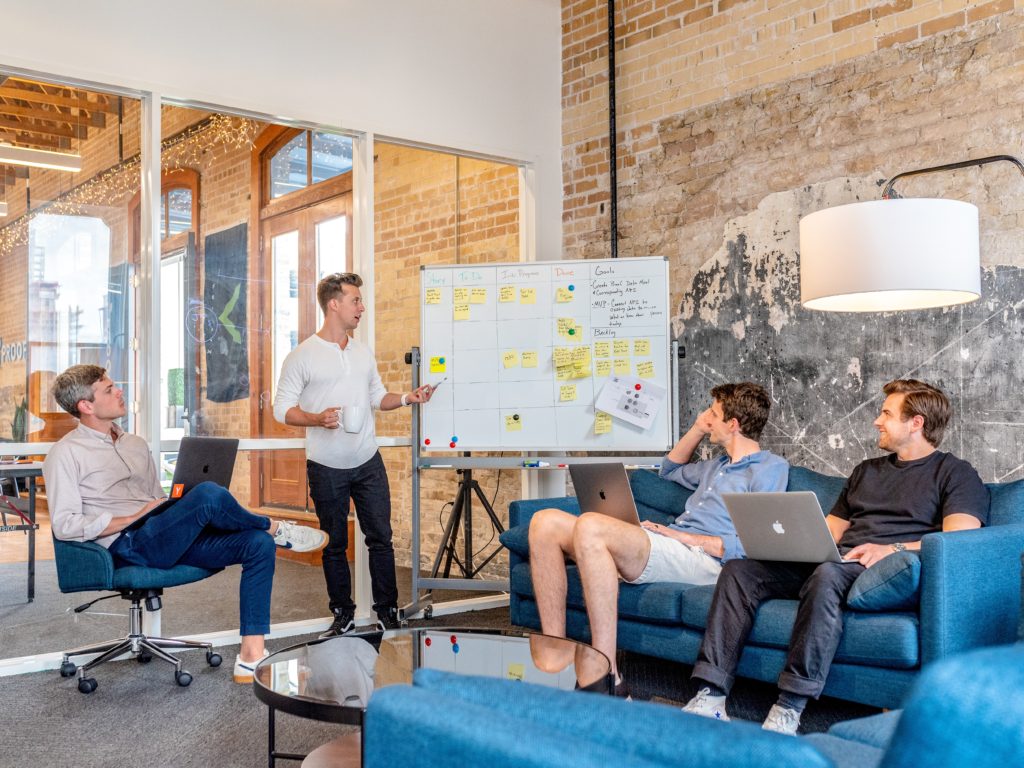Shaping Healthy Workplaces – Entrpreneurs Drive Workplace Well-being
Learn from top entrepreneurs how to integrate well-being into your business strategy, enhancing employee satisfaction and performance.
The conversation around workplace well-being is strongly focused on tangible perks: free lunches, nap pods, and in-office gyms. While these benefits are definitely appealing, it might be prudent to consider a deeper truth that emerged from the Hawthorne Experiments. This series of groundbreaking experiments were conducted in the 1920s and 30s at the Hawthorne Works factory in Illinois, Chicago.
These studies, initially designed to explore the impact of lighting on worker productivity, revealed a surprising twist. Regardless of whether the lighting increased or decreased, productivity went up. The key takeaway wasn’t about the lighting itself, but rather the psychological effect of being observed and having their well-being considered by management.
This discovery, now known as the Hawthorne effect, highlights a crucial aspect of workplace well-being: employees respond positively to the knowledge that management cares. It’s not just about the specific initiatives, but the perception of being valued that fuels motivation and engagement.
This blog delves into this concept, exploring how entrepreneurs can cultivate a thriving work environment that prioritises not just physical comfort, but also the mental and emotional well-being of their employees. We’ll explore strategies that go beyond beanbags and ping pong tables, fostering a culture where employees feel genuinely supported and valued.
By prioritising well-being, entrepreneurs cultivate a powerful force for innovation and success.
The importance of well-being in the workplace
While a healthy workplace offers numerous advantages, it’s no longer a ‘nice-to-have’. It’s a fundamental requirement for businesses, especially those seeking long-term success. A growing body of research consistently demonstrates a clear link between both physical and mental health and a company’s overall performance.
Prioritising employee well-being is a win-win. Studies consistently show that healthier employees are demonstrably more productive, missing fewer workdays. For example, research by Medibank Private found a stark difference: the most unhealthy workers logged only 49 effective hours per month compared to a staggering 143 for the healthiest.
Mental health is equally crucial. According to Beyond Blue, mental health issues cost Australian workplaces an estimated AUD 17.9 billion per year due to absenteeism, reduced productivity, and compensation claims.
These figures highlight the importance of prioritising employee well-being – not just for ethical reasons, but also for the bottom line.
The well-being equation
Solid evidence links employee well-being, including both physical and mental health, to superior business performance. Here’s how:
Physical health and productivity
Research consistently shows a clear correlation. For example, Safe Work Australia found that healthy employees miss far fewer workdays – averaging 5.2 sick days per year compared to 9.3 for those in poor health.
Mental health matters
The World Health Organisation defines health not merely as the absence of disease but as a state of complete physical, mental, and social well-being. Mental health issues, which are a significant concern impacting millions of Australians each year, can lead to decreased employee engagement, higher turnover rates, and increased absenteeism within a company.
Entrepreneurs: Champions of well-being
Entrepreneurs hold a unique position to influence both employee well-being and business success. Investing in health and wellness programs can significantly enhance team well-being and productivity.
Programs that pay off
Companies implementing comprehensive health and wellness programs often see positive returns. Take Canva, for instance, whose holistic wellness programme incorporates on-site yoga, mental health resources and flexible work arrangements, fostering a positive and productive work environment.
Leadership by example
Entrepreneurs who prioritise their own health and actively promote wellness initiatives inspire employees to adopt similar habits. This leadership style not only improves the company’s overall health profile but also boosts morale and loyalty.
Why mental health matters
Investing in employee well-being isn’t simply a feel-good initiative; it’s a strategic investment that boosts profits and organisational health. A focus on well-being translates directly to a healthier bottom line.
Empowering well-being: Entrepreneurial strategies
Forget relying solely on perks like ping-pong tables and nap pods. True workplace well-being requires a strategic approach. Here’s how entrepreneurs can cultivate a thriving environment that prioritises employee health and happiness:
Lead the change
The influence of an entrepreneur’s health habits on their team is undeniable. Prioritising their personal well-being sets the tone for a healthy team. As Vishen Lakhiani, a company culture thought leader, emphasises, “Health magnifies wealth.”
Cultivate a ‘Well work-life’
Promote work-life balance and well-being by offering flexible work arrangements, subsidising gym memberships, and hosting wellness programs.
Destigmatise mental health
Encourage mental health days and open conversations about well-being. Sherry Walling of Zenfounder suggests the same: “Education and conversation around mental health need to happen in every place where entrepreneurs are gathering.”
Embrace innovative wellness
Offer innovative wellness options to keep your team engaged. Provide ergonomic solutions like standing desks, and organise health-focused activities like workshops or team hikes.
By adopting these strategies, entrepreneurs can foster a workplace culture where well-being isn’t just an added benefit, but a fundamental pillar. This proactive approach, combined with creative perks that cater to employee needs, not only enhances employee satisfaction and retention but also contributes significantly to the business’s overall success and sustainability.
Case studies of entrepreneurial success in employee well-being
These case studies illustrate how entrepreneur-led businesses have successfully integrated employee well-being into their operational ethos, setting a benchmark for company culture and employee engagement.
Build-A-Bear workshop
Known for creating a uniquely engaging work environment, the company offers its employees an array of unique perks that contribute to a fun and motivating atmosphere.
Founded by: Maxine Clark
Key initiatives:
- On-site nap pods: Encouraging rest and relaxation to boost productivity and creativity.
- Employee discounts: Enhancing employee satisfaction and loyalty through discounts on merchandise.
- Employee recognition programs: Regularly acknowledging employee efforts to maintain high morale and motivation.
Warby Parker
As an eyewear company, Warby Parker stands out not only for its products but also for its quirky and caring company culture.
Founded by: Four Wharton graduates
Key initiatives:
- Unlimited paid time off: Empowering employees with the flexibility to balance work and personal life.
- Extended parental leave: Offering comprehensive support to new parents, well beyond standard policies.
- Work-life balance: Focusing on employee happiness, translates to high satisfaction and low turnover rates.
Patagonia
More than a clothing brand, Patagonia is a pioneer in environmental and social responsibility, integrating these core values into every aspect of its operations.
Founded by: Yvon Chouinard
Key Initiatives:
- Onsite childcare: Providing support for working parents with top-tier childcare services.
- Environmental activism: Encouraging employees to engage with environmental causes, reinforcing the company’s mission.
- Development programmes: Offering extensive training and development opportunities that promote personal and professional growth.
Culture Amp
As a people analytics platform, this company practices what it preaches by maintaining a transparent and supportive company culture.
Founded by: Robert Reichek and Didier Elzinga
Key Initiatives:
- Flexible work arrangements: Allowing employees to work in ways that suit their personal needs and life circumstances.
- Generous parental leave: Providing substantial support to parents in the company.
- Emphasis on professional development: Committing to the continuous growth and well-being of every team member.
These case studies across various industries and different parts of the world illustrate the significant impact that entrepreneurial leadership can have on enhancing workplace well-being and setting a high standard for company culture. These examples can inspire other entrepreneurs to prioritise and innovate in employee well-being.
Overcoming challenges in enhancing workplace well-being
The benefits of prioritising health and well-being in the workplace are clear. But the path to implementing these initiatives can be challenging. Entrepreneurs face unique hurdles not only in their personal lives but also in fostering a culture that supports these values within their companies. Here are some less obvious but significant obstacles and innovative strategies to overcome them.
Common Obstacles
Personal time constraints
Entrepreneurs often struggle with balancing the demands of their business with personal health due to time constraints. This can lead to neglecting their own well-being, which paradoxically can impair their ability to lead effectively.
Cultural misalignment
In some cases, the existing company culture may not align with health-centric values. This misalignment can show up as scepticism or resistance from employees, particularly if they perceive these initiatives as superficial or unrelated to their core work.
Inconsistent engagement
Even with the best-laid plans, initial enthusiasm for health programs can wane over time. Sustaining engagement is a common challenge, particularly in diverse teams with varying health needs and interests.
Strategies for overcoming these challenges
Integrating health into business goals
One effective strategy is to integrate personal and employee health goals with broader business objectives. For instance, linking team wellness metrics to productivity targets can help embed these initiatives into the company’s core operations, making them feel more relevant and essential.
Building on small successes
Instead of rolling out large-scale health programs from the start, entrepreneurs can focus on smaller, manageable changes that gradually build momentum. Simple steps like organising regular health discussions, short group exercises during breaks, or healthy snacks in the office can set the groundwork for more extensive programs later.
Personalising wellness approaches
Acknowledging that one size does not fit all is crucial in sustaining engagement. Offering customisable wellness plans or allowing employees to choose their preferred wellness activities can increase personal relevance and commitment. Surveys and feedback sessions can help tailor initiatives to better meet the diverse needs of the team.
Leading by authentic example
Entrepreneurs must go beyond token gestures and genuinely embody the wellness practices they promote. This involves openly discussing their own challenges and successes in maintaining health, to encourage an open and supportive culture. Sharing personal stories or struggles with work-life balance, for example, can make leaders more relatable and encourage others to share and engage with wellness programs more openly.
Leveraging technology and partnerships
Utilising technology to track and share health metrics can make wellness efforts more tangible and data-driven. Additionally, partnerships with local gyms, health experts, or wellness start-ups can provide resources and external motivation for maintaining the momentum of health initiatives.
By implementing thoughtful, tailored strategies, entrepreneurs can effectively foster a health-centric culture, boosting productivity and engagement. These approaches emphasise the need for adaptability and commitment in integrating well-being into business strategy.
Beyond beanbags: building a culture of well-being and innovation
Entrepreneurial success goes beyond just ping-pong tables and gym memberships. It’s about prioritising employee well-being and fundamentally transforming how we view work’s impact on our lives. Entrepreneurs have a unique opportunity – and responsibility – to champion a healthier, more innovative future for business culture globally.
While implementing wellness initiatives requires effort, the rewards are transformative. Entrepreneurs can weave well-being into the DNA of their companies, fostering environments where creativity thrives, ideas flourish, and employees feel genuinely excited to come to work. This sets new standards for what it means to be a successful, modern business.
Key takeaways
The strength of your business lies not only in profits but in the well-being of your people. As the saying goes, “A healthy mind resides in a healthy body.” This wisdom holds true for organisations, empowering innovation and excellence.
By leading with empathy, demonstrating commitment to well-being, and overcoming obstacles, entrepreneurs can inspire a shift towards holistic business practices. This is essential in today’s blurred work-life environment. Businesses that champion employee health pave the way for a brighter future.
Embrace this challenge. Let your thriving business exemplify the transformative power of prioritising employee well-being. Because as that singular entrepreneur, Richard Branson, so beautifully stated,
“If you look after your people, they will look after your customers. It’s that simple”.




































